What’s the Difference Between Cash Flow and Income? And Why Does It Matter?

You’re sitting at your desk, staring at two different financial reports. One shows your business made a healthy profit last month. The other reveals you’re scrambling to pay bills this week. How can both be true at the same time? Welcome to one of business’s most confusing realities: the difference between cash flow and income.
This confusion isn’t just academic. It’s the reason why 82% of businesses fail due to cash flow issues, even when they appear profitable on paper. Understanding this distinction could be the difference between thriving and barely surviving, whether you’re running a business or managing your personal finances.
Key Takeaways:
- Learn why a profitable business can still run out of cash and how timing creates this paradox.
- Discover how cash flow tracks actual money movement while income measures theoretical profitability.
- Understand why cash flow is often considered more important than profit for business survival.
- Explore the three types of cash flow and how each impacts your financial health differently.
- Master the timing differences that create gaps between what you’ve earned and what you can spend.
- Recognize warning signs that your cash flow problems might be hiding behind profitable-looking income statements.
- Develop strategies to manage both cash flow and income for optimal financial health.
The Fundamental Difference: Timing is Everything
Cash flow is like ordering food at a restaurant versus actually eating it. Income is like placing your order – you’ve committed to the transaction, and it will show up on your bill. Cash flow is when the food actually arrives at your table and you can consume it. The timing gap between these two events can make or break your financial stability.
Income, also known as net income or profit, represents the money left over after subtracting all expenses from revenue. This calculation follows accounting principles that record transactions when they’re earned or incurred, regardless of when money actually changes hands. If you invoice a client for $10,000 in January, that revenue appears on your income statement immediately, even if the client doesn’t pay until March.
Cash flow, on the other hand, tracks the actual movement of money into and out of your accounts. It’s the real dollars you can touch, spend, or deposit. Using the same example, that $10,000 doesn’t show up in your cash flow until March when the payment actually arrives. This timing difference creates the gap that catches so many people off guard.
The disconnect becomes even more pronounced when you consider that over 74% of small businesses report having enough cash to cover at least one month of operating expenses, yet cash flow management remains the second biggest challenge they face. This suggests that even businesses with seemingly adequate cash reserves struggle with the timing and predictability of their cash movements.
Understanding Income
Income statements paint the broad strokes of your financial picture. They follow accrual accounting principles, which means they capture the full scope of your business activity regardless of payment timing. When you deliver a service or ship a product, that revenue gets recorded immediately. Similarly, when you incur an expense, like ordering inventory or accruing payroll, it hits your income statement right away.
This approach gives you a comprehensive view of your business performance over time. You can see seasonal patterns, track growth trends, and understand your true profitability. Income statements help answer questions like: “Are we making money overall?” and “Which products or services are most profitable?”
However, income statements can be misleading when it comes to day-to-day operations. They include non-cash expenses like depreciation and amortization, which reduce your reported income but don’t require any actual cash outlay. They also include credit sales that might take weeks or months to collect. This means you could show strong profits while simultaneously facing a cash crisis.
The income statement serves as your business’s report card, showing how well you’re performing academically. But just like a student with good grades might still struggle to pay for lunch, a profitable business might struggle to pay its bills if the cash isn’t flowing at the right times.
Decoding Cash Flow
Cash flow statements tell a different story entirely. They strip away the accounting conventions and focus on one simple question: “How much actual money moved in and out of the business?” This statement reconciles the gap between your income statement’s promises and your bank account’s reality.
Cash flow statements break down into three distinct categories, each revealing different aspects of your financial health. Operating cash flow shows money generated from your core business activities – the cash from customer payments minus the cash paid for operating expenses. This is often called the “lifeblood” of your organization because it reflects whether your fundamental business model generates actual cash.
Investing cash flow tracks money spent on or received from investments in your business’s future. This includes purchasing equipment, buying real estate, or selling assets. These movements don’t appear on your income statement but significantly impact your available cash. Financing cash flow covers money exchanged with investors, lenders, or owners – things like loan proceeds, debt payments, or equity investments.
The beauty of cash flow analysis lies in its honesty. It can’t be manipulated by accounting decisions or timing tricks. If the cash isn’t there, it simply isn’t there. This makes cash flow a more reliable indicator of immediate financial health and your ability to meet short-term obligations.
Why Cash Flow Often Trumps Income
Business experts frequently say “cash is king,” and there’s solid reasoning behind this mantra. While income measures your theoretical success, cash flow determines your practical survival. You can’t pay employees with accounts receivable or cover rent with accrued revenue. Real-world obligations require real money.
Consider the experience of rapidly growing companies. They often report strong income growth while simultaneously struggling with cash flow. Each new sale requires upfront investments in inventory, labor, or materials before customers pay. The faster they grow, the more cash they need to fund that growth, creating what’s known as the “growth trap.”
This phenomenon explains why so many SMEs fail due to cash flow problems. These aren’t necessarily unprofitable businesses, they’re often profitable companies that simply couldn’t bridge the timing gap between earning money and collecting it. The marketplace is littered with “successful” businesses that died from cash starvation.
Even personal finances follow this same principle. You might have a high-paying job and look wealthy on paper, but if your paychecks arrive monthly while your bills come due weekly, you could face serious cash flow problems despite having a strong income.
The Payment Problem
One of the biggest drivers of cash flow challenges is the persistent problem of delayed payments. Recent data shows that invoices are paid on average 7.3 days late, and this seemingly small delay can create massive ripple effects throughout a business’s financial ecosystem.
Late payments disrupt the entire cash conversion cycle. When customers stretch payment terms, businesses must either dip into reserves or delay their own payments to suppliers and employees. This creates a domino effect that can strain relationships throughout the supply chain. Many businesses find themselves in the uncomfortable position of chasing payments while simultaneously being chased by their own creditors.
The impact goes beyond mere inconvenience. Late payments force businesses to rely on more expensive financing options like credit cards or emergency loans. These solutions provide temporary relief but add interest costs that eat into profits. Over time, businesses caught in this cycle find themselves paying more to stay afloat, reducing their overall profitability even when their core operations remain healthy.
Smart businesses have learned to build payment terms and collection processes directly into their cash flow management strategies. This includes offering early payment discounts, implementing automated reminder systems, and sometimes partnering with factoring companies to convert receivables into immediate cash.
Managing Cash Flow vs Income
The most successful individuals and businesses don’t choose between cash flow and income management – they excel at both. This requires understanding how these two metrics interact and developing systems that optimize both simultaneously.
Effective cash flow management starts with accurate forecasting. This means tracking not just when sales occur, but when payments typically arrive. It involves understanding your payment cycles, seasonal variations, and customer behavior patterns. Many successful businesses maintain cash flow forecasts that extend 13 weeks into the future, giving them enough visibility to anticipate and address potential shortfalls.
Income optimization, meanwhile, focuses on improving the efficiency and profitability of your core operations. This includes pricing strategies, cost management, and operational improvements that increase your bottom line. However, these income improvements must be evaluated through a cash flow lens to ensure they don’t create liquidity problems.
The integration of both approaches creates a more resilient financial foundation. Businesses that track both metrics can make informed decisions about when to invest in growth, when to prioritize collections, and when to seek additional financing. They understand that a profitable quarter with poor cash flow might require different strategies than an unprofitable quarter with strong cash reserves.
Warning Signs and Red Flags
Recognizing the early warning signs of cash flow problems can prevent small issues from becoming business-threatening crises. These red flags often appear long before problems show up in income statements, making cash flow monitoring an essential early warning system.
Lengthening collection periods signal potential trouble ahead. If customers who typically pay in 30 days start taking 45 or 60 days, this gradual shift can indicate either customer financial distress or internal collection process problems. Similarly, increasing reliance on credit cards or lines of credit to meet routine expenses suggests that operating cash flow isn’t keeping pace with operating needs.
Another critical warning sign is the growing gap between reported profits and available cash. When income statements show consistent profitability but bank balances remain flat or declining, it’s time for a deep dive into cash flow analysis. This disconnect often reveals issues with collection processes, inventory management, or expense timing that require immediate attention.
The most dangerous red flag is when businesses start delaying payments to suppliers or employees to preserve cash. While this might provide temporary relief, it often indicates that the fundamental cash generation model needs adjustment. Businesses in this situation typically have a narrow window to implement corrections before relationships and credit ratings suffer permanent damage.
Work With Us
Understanding the intricate relationship between cash flow and income represents more than just financial literacy – it’s about gaining the insight needed to make confident decisions about your financial future. Whether you’re managing business operations or personal investments, these concepts form the foundation of sound financial planning. The ability to see beyond surface-level profitability and understand the underlying cash dynamics can mean the difference between sustainable growth and unexpected setbacks.
At Avior, we specialize in helping individuals and families with these complex financial relationships. Our wealth management approach recognizes that true financial success requires more than just investment returns – it demands a comprehensive understanding of how different financial elements work together to support your long-term objectives. Ready to gain deeper insight into your financial picture and develop strategies that work for both your immediate needs and future aspirations? Contact us today to schedule a consultation and discover how proper financial planning can transform your relationship with money from reactive to proactive.
No Comments
Sorry, the comment form is closed at this time.




